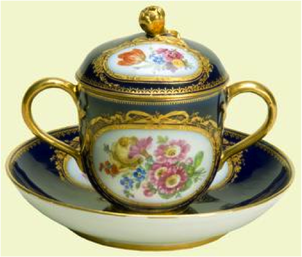 By Maria Depenweiller, P.H.Ec. It was likely that Christopher Columbus was the first European explorer who brought cacao beans to Europe, but it was not until the conquest of the Aztec empire by Cortez that cacao and chocolate gained popularity in Europe. Spaniards at that time had the monopoly on quite a number of goods imported from the New World, including chocolate. By the end of the 16th century drinking chocolate became a fashionable drink among the Spanish aristocracy.
0 Comments
By Mary Carver, P.H.Ec
Teachers and students waited a long time for it, but finally on June 6, 2013, the Ontario Ministry of Education released new and revised Family Studies Curriculum. Revision to the area of study began in 2007. No reason was given for the extended delay, although the Ministry does say that the review process was guided by research and consultations on new approaches specific to the discipline. Once known as Home Economics, Family Studies (FS) courses today are part of the Social Sciences and Humanities Curriculum. Of the 31 new or revised Social Sciences and Humanities courses, 20 of them are in Family Studies which is most encouraging to the Ontario Home Economics Association (OHEA). The Social Sciences and Humanities Curriculum, Grades 9-12, 2013 (Revised) is available on the Ontario Ministry of Education website - click here.  By Joyce Parslow, P.H.Ec. Canadian beef is world-class in quality and availability. Beef is raised in each and every province. Cattle feed on grass and forage for the most part with a blend of grains such as barley, wheat or corn mixed-in as they reach maturity. Breeds and feeds give Canadian beef the flavour and tenderness you expect in a great steak. Making the Grade: Canadian beef bought in-store is federally or provincially inspected for safety – no compromises. The best in beef is given an 'A' GRADE quality designation. Just as in hockey, look for Canada AAA as the top in the league, followed by double A (AA) and then single A. Shopping Simplified: Canadian steaks are sorted into three basic cooking categories. Package labels identify the cut and the recommended cooking method (e.g. Top Sirloin grilling steak, Flank marinating steak). |
The Ontario Home Economics Association, a self-regulating body of professional Home Economists, promotes high professional standards among its members so that they may assist families and individuals to achieve and maintain a desirable quality of life. Categories
All
Archives
December 2023
|
|
Subscribe to our mailing list
|
|
Unsubscribe from our mailing list
|
Copyright © 2023 Ontario Home Economics Association (OHEA). All Rights Reserved.



 RSS Feed
RSS Feed